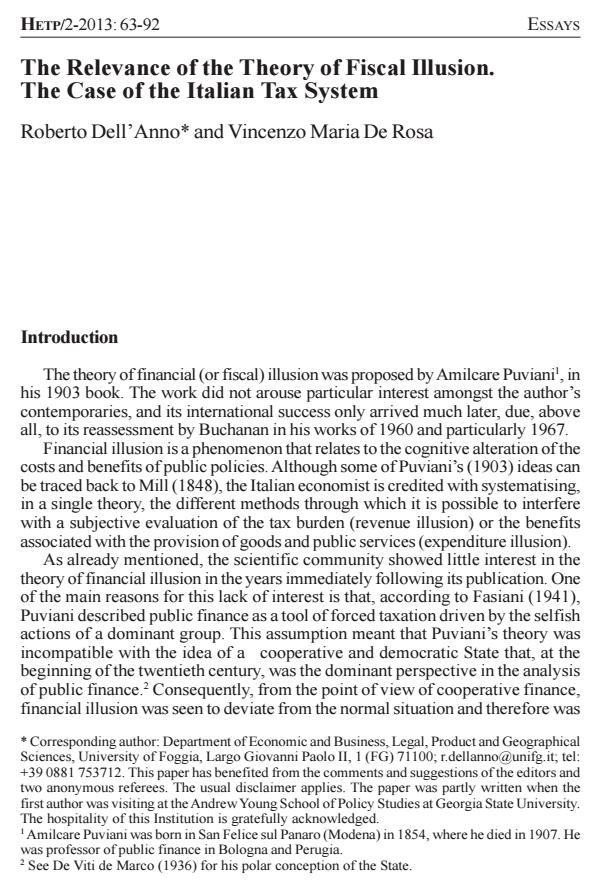The Relevance of the Theory of Fiscal Illusion. The Case of the Italian Tax System
Journal title HISTORY OF ECONOMIC THOUGHT AND POLICY
Author/s Roberto Dell'Anno, Vincenzo Maria De Rosa
Publishing Year 2013 Issue 2013/2
Language English Pages 30 P. 63-92 File size 110 KB
DOI 10.3280/SPE2013-002004
DOI is like a bar code for intellectual property: to have more infomation
click here
Below, you can see the article first page
If you want to buy this article in PDF format, you can do it, following the instructions to buy download credits

FrancoAngeli is member of Publishers International Linking Association, Inc (PILA), a not-for-profit association which run the CrossRef service enabling links to and from online scholarly content.
This work analyses the phenomenon of fiscal illusion (Puviani, 1903) in the context of the Italian tax system. Financial (or fiscal) illusion refers to mechanisms which cause a cognitive alteration on the part of the taxpayer regarding the evaluation of the costs and benefits of public policies. Puviani (1903) was the first to classify the different types of financial illusions. He highlighted the main strategies used to hide the real costs of financing public goods and services through taxes (illusions on revenue) or to overestimate their usefulness (illusions on expenditure). The main conclusions of the work are that: (i) from a methodological point of view, there is a connection between Puviani’s theory of fiscal illusion and some of the assumptions of the behavioral approach and (ii) from an operational point of view, it is a useful tool to understand the motives that could have inspired several recent taxes and legislative measures within the Italian tax system. These results support the relevance of Puviani’s theory to the contemporary theory and practice of public finance.
Keywords: Financial illusion, fiscal illusion, tax illusion, Puviani, Italian school of public Finance
Jel codes: H20, H3, B29
Roberto Dell'Anno, Vincenzo Maria De Rosa, The Relevance of the Theory of Fiscal Illusion. The Case of the Italian Tax System in "HISTORY OF ECONOMIC THOUGHT AND POLICY" 2/2013, pp 63-92, DOI: 10.3280/SPE2013-002004